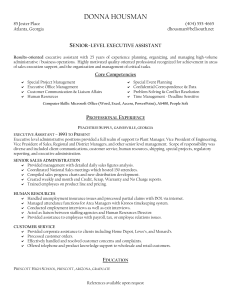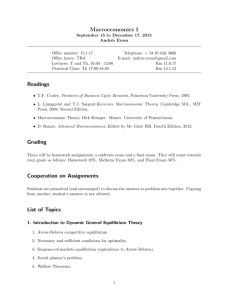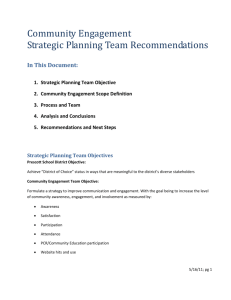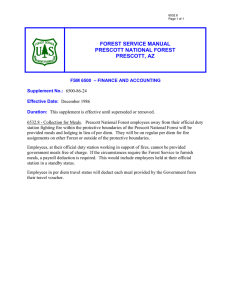— MA O^ A
advertisement
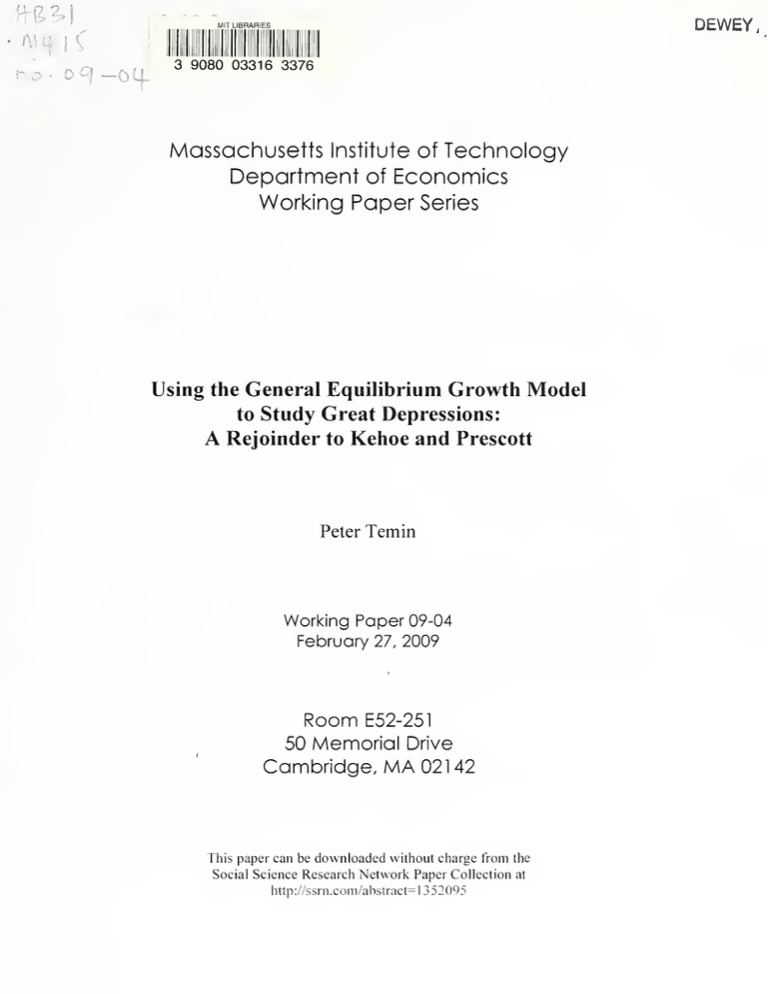
^>^\ ^ t)0' I ^1. O^ — OUiv/-j ^MIT \ llllllllllllllllil LIBRARIES DEWEY, ^ lii»fc.«tta.i Ullllllllllllll 3 9080 03316 3376 Technology Department of Economics Working Paper Series MassQchusetts Institute of Using the General Equilibrium Growth Model to Study Great Depressions: A Rejoinder to Kehoe and Prescott Peter Temin Working Paper 09-04 February 27, 2009 Room E52-251 50 Mennorial Drive Cambridge, MA 021 42 This paper can be downloaded without charge from the Social Science Research Network Paper Collection http;//ssrn.coiii/abstract= 1352095 at f Using the General Equilibrium Growth Model A Rejoinder to Kehoe and Peter to Study Great Depressions: Prescott Temin Abstract The reply by Kehoe and Prescott restates their position but does not answer the criticism made in my review of their book (Temin 2008). argued that the general equilibrium model of economic growth to study income fluctuations does not lead to a useftil research I program; the use of closed-economy models to understand the world problems of the 1930s and the Latin-American problems of the 1980s Kehoe and Prescott' s recommended approach do other branches of economics. I is not helpful; and the authors using not use data with the care standard stand by those criticisms. JEL Codes E32,N10 Key words: Depressions, economic fluctuations, general equilibrium models Department of Economics, MIT. Contact: ptemin@mit.edu. in Using the General Equilibrium Growth Model A Rejoinder to Kehoe and Study Great Depressions: Kehoe and Prescott Prescott (2008) express their unhappiness with 2008) of their book (Kehoe and Prescott, 2007). hives a to my review (Temin, understand their unhappiness; no one I bad review. They score a couple of cheap shots off me ("IVlexico America."). They do understand that too; I not it North could not resist scoring some cheap shots off them. I however confront the main argument of my review, and opportunity to rescue is in from the blizzard of detail in I taice this Kehoe and Prescotfs They reply. chose to restate their methodology and quibble over details and definitions without confronting the main issues I made three economic growth at stake. main points to study in attempt to redress this balance here. 1 my review. First, the general equilibrium model of income fluctuations does not lead to a useful research program. Second, the use of closed-economy models to understand the world problems of the 1930s and the Latin-American problems of the 1980s using Kehoe and become standard Prescott's in is recommended approach do other branches of economics. The following paragraph from As Cole and Ohanian 1 not use data in the discuss these points their reply sets stress, this sort not helpful. Third, the authors ways that have in turn. up the debate: of exercise, which takes the behavior of productivity as exogenous, does not provide us with a satisfactory theory of the U.S. Great Depression. Nonetheless, precisely what a we learn a lot from the exercise because satisfactory theory needs to do: productivity over the period 1929-33, and from 1929 recovered. model is to A it It it defines very needs to account for the sharp needs to explain why hours fell fall in so sharply 1933 and stayed so depressed afterwards even though productivity theory that cannot accomplish these tasks using a modified version of the not a successful theory in the context of the research agenda developed in G}-eat Depressions of the Twentieth Century (Kehoe and Prescott, 2008, p. 6) .T,:... agenda Kehoe and Prescott argue that their for studies of large economic downturns. They Cole and Ohanian's lead essay fell in their model useful because is volume. The list so sharply in the Great Depression. But the observed comes end of the arguments at the should have come at the in the beginning. My essays in defines a research two questions question first it fall in Kehoe and is from that arise why productivity productivity typically Prescott (2007), many review reproduced statements from posing but not answering the same question that Kehoe and Prescott assert when is it essays one of the aims of their approach. This suggests that the Kehoe and Prescott research strategy highlights this question but provides The essays collected in the question for research. starting point, but example set strategy. this question. The primary question falls into answering it. this not a useful essays took Cole and Ohanian (1999) as their by Cole and Ohanian and translated of output in reviewed therefore suggest 1 none of them answered total factor productivity. translation book Many of those guidance little I falls in Instead, they followed the aggregate production into raised in my productivity declines resulted review is whether The general equilibrium model of economic growth frequently foresight. This may be as well suited to the study of large depressions, great or otherwise, investors and policy occurs. This depression. is makers is good assumption a income fluctuations. that they One is is negative. closed by for the long run. but it is not characteristic of large almost always are unexpected. Private find out that they are in the midst of a large fluctuation as very important for the analysis of policies undertaken Assuming this a promising research in The evidence from Great Depressions of the Twentieth Century assuming perfect falls in perfect foresight rules some of the most in the interesting it course of the problems of Digitized by the Internet Archive in 2011 with funding from Boston Library Consortium Member Libraries http://www.archive.org/details/usinggeneralequiOOtemi large income fluctuations off the table. kind of analysis for policy advice We watched It also reduces the lessons the current (2008-09) in this fall in the and Freddie Mac, Bear Steams, and even earlier failures Capital Management. Yet perfect foresight was not vanished; Treasury Secretary Paulson proposed to get ahead of the developing financial know early to would if this decline is crisis. new As the start of another classify as a great depression. But it I in from 1929 was New week Many Hours write this in spring 2009, that Kehoe and it is too Prescott abundantly clear that perfect by Kehoe and Prescott fell Mae as he struggled is made in the short run. "why hours fell so sharply 1933 and stayed so depressed afterwards." The obvious answer a Great Depression. decade. the to listed takeover of Fannie policies every is quarter of evidence. President Bush simply foresight fails to illuminate the policy choices that need to be The second question in the fourth Enron and Long Term like downturn already this economic decline. with horror as the financial system collapsed 2008. There had been anticipatory steps toward one can draw from is that there because unemployment rose and stayed high for a economists and economic historians have asked whether the policies of Deal contributed to the continuing high employment. Despite sharply differing underlying models, the answers appear to be remarkably similar. Temin (1989) and Cole and Ohanian (2004) used very different models to reach similar conclusions. In fact conclusion is no more complicated than the example of price supports in elementary economics. Kehoe and Prescott defined two tasks for a satisfactory theory paragraph quoted. The research program. first this in the task appears too hard and the second too easy for a serious '.I.-'.' I my also argued in to analyze large income fluctuations and growth slowdowns do not confront this economy model fruitful 1980s review that models of closed economies are not the best in different in the in their in their reply; about the reply does not advance this discussion. common difficulties of so many parts Kehoe and think that the most I Latin in (1989). Here is a short version of the latter view: the Great Depression from country to country "To in the in Friedman and Eichengreen (1994) and Temin a first approximation, the spread of short and straightforward: fixed is under the gold standard transmitted negative demand shocks (Temin, exchange rates 1993)." argued I in America of the world. The classic statement of the national view of the Great Depression can be found Schwartz (1963); the international view can be found Prescott the reiteration of a closed- debate about the Great Depression and the problems is The various depressions twentieth century. countries were interconnected. fundamental question way in my review that inattention to this debate was a defect of Great 1 am sorry that Prescott fault me for not finding their Depressions of the Twentieth Century. Kehoe and Prescott did not respond. Finally, Kehoe and making some data review, but it I now errors. extend from the book. The hard to find if 1 feel my URL badly that review is given I did not find the website before writing to say that a in you do not already know website the book, as it book's data website and exists. is only Kehoe and The website useftil if in the Ohanian, even first in their chapter by Kehoe and it is very not mentioned in the Table of Contents, the Forward, the Preface, and the List of Contributors. mentioned people can find Prescott say, but is my It is not Prescott or the second chapter by Cole and appendices and notes on data. The website was mentioned on the flyleaf of the book and in a few data appendices of later chapters, but highlighted in the parts of the book that a reader sees it when approaching was not the book a in normal matter. My main was about point about data the lack of hypothesis testing. and Prescott uses lots a turn away from marks this research reply by was not about of theory, but the footnoting or tests program as an idiosyncratic approach. There are Kehoe and seem only Prescott, but they to be used to important hypothesis to test about large income fluctuations. book and challenge Kehoe and Prescott by the empirical methods tested 1 made some at use data mistakes in Journal of Economic Literature to in the rest my point listed here. I am sorry that I is of graphs my hypotheses that can be in my I raised in we all volume me 1 reviewed. Yet to join in the my review. was an in January "Nobel laureate Ed now Keynesians and burden of government, we economists are support a big increase the None of my assertion that there Prescott" and sign on to the following statement. that in Prescott chose to center their reply to received an e-mail from the Cato Institute inviting all of review; they are relevant only to the third Prescott in their reply take issue with Notwithstanding reports that criticism (Temin, forthcoming). set the record straight Kehoe and the not the most review, and a Corrigendum will appear my in of economics. underlying political agenda to the studies collected I is hypothesis that reiterate review on these data mistakes instead of confronting the questions Kehoe and lots test the to generate testable these mistakes affect the main arguments of 2009 of hypotheses. This the pervasive growth of hypothesis testing in the rest of economics and various countries had a great depression by their definition. This the it The methodology being championed by Kehoe does not lead to formal it numbers being used; 1-' :i' more government spending is a way improve economic performance. More government spending by Hoover and Roosevelt did not pull the U.S. economy out of the Great Depression in the 1930s. More government spending also did not solve Japan's "lost decade" in the 1990s. As such, it is a triumph of hope over experience to believe that more government spending will help the United States today. To improve the economy, policy makers should focus on reforms that remove impediments to work, saving investment, and production. Lower tax rates and a reduction of the burden of government are the best ways to use fiscal policy to boost growth (Niskanin, 2009). the undersigned do not believe that to This looks like a political agenda to me. The policy in question government out of the economy and allow the competitive market this policy is to maximize GDP. No thought economy growing, the distribution of income is given to the time that would it to is to take work. The aim of would take result, or policies to to get the ease the pain of people caught in the economic firestorm. If economists argue like this, then little wonder This is it that they are relegated far to the side in policy discussions that affect us the underlying political agenda in the book 1 reviewed. is all. References Cole, Harold L., and Lee E, Ohanian. 2004. the Great Depression: Economy, A "New Deal Policies and the Persistence of General Equilibrium Analysis." Journal of Political 112: 779-816 (August). Eichengreen. Barry, 1992. Golden Fetters: The Gold Standard and the Great Depression, 1919-1939. Friedman, Milton, and Anna J. New York: Oxford. Schwartz, 1963. A Monetary Histoiy of the United States, 1867-1960. Princeton: Princeton University Press. Kehoe, Timothy Century and Edward C. Prescott, 2007. Great Depressions of the Twentieth J., Minneapolis: Federal Reserve Bank of Minneapolis. (eds.). Kehoe, Timothy and Edward C. Prescott, 2008. "Using the General Equilibrium J., Growth Model to Study Great Depressions: Federal Reserve Niskanin. Bill, . A Reply to Temin." Staff Report 418, Bank of Minneapolis Research Department (December). 2009. E-mail (January 16). MIT Temin, Peter, 1989. Lessons ft-oni the Great Depression. Cambridge: Temin, Peter, 1993. "Transmission of the Great Depression." Journal of Economic Perspectives, Temin, Peter, 2008. of Timothy Century, " J. 7: Press. 87-102 (Spring). "RBC Views of the Great Depression and Recent Events: Kehoe and Edward C Prescott's Great Depressions A Review of the Twentieth Journal of Economic Literature, 46: 669-84 (September).
